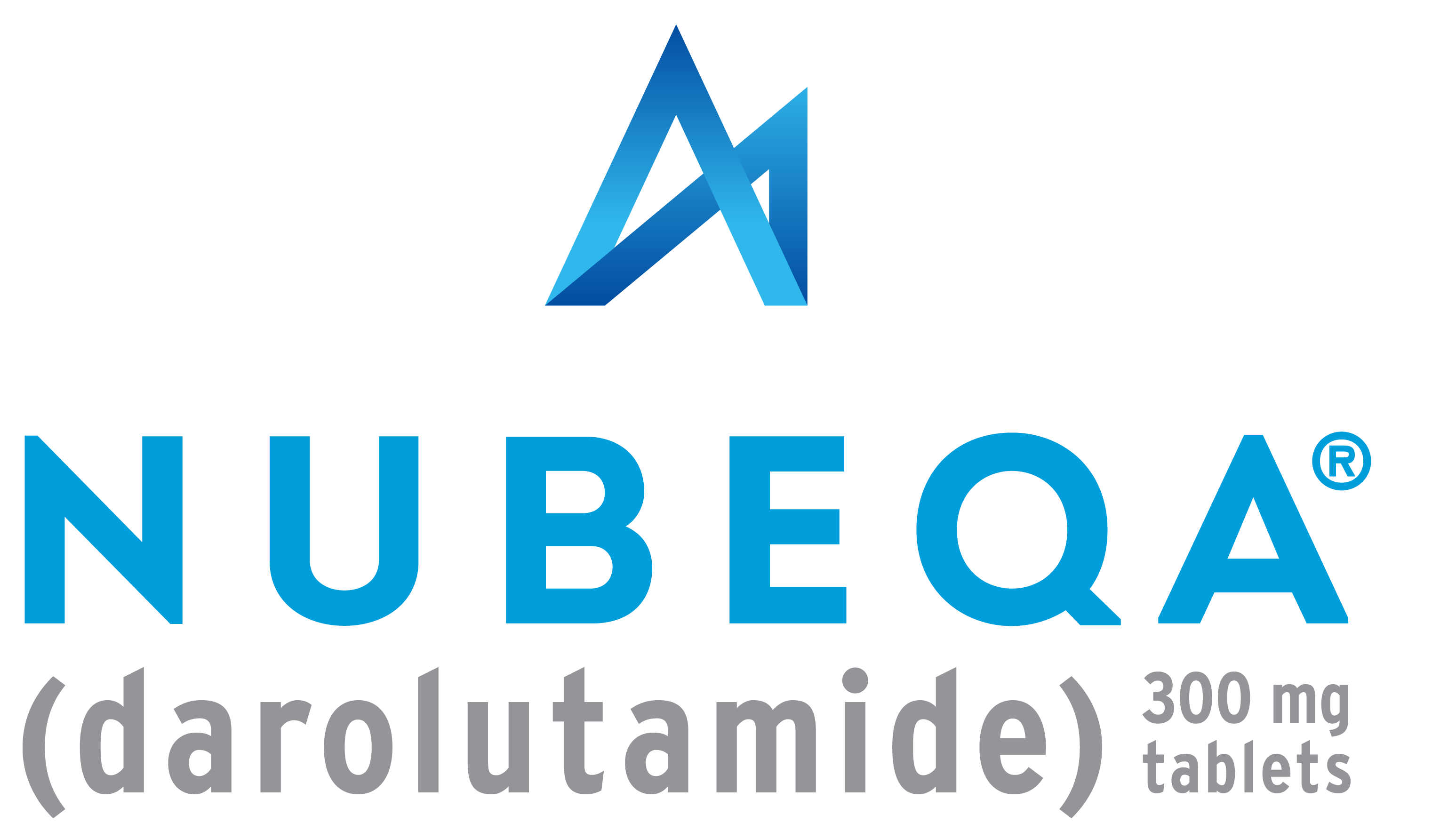ARAMIS STUDY DESIGN
The largest double-blind, placebo-controlled, international, multicenter study in nmCRPC to date1-5
- Treatment continued until radiographic disease progression as assessed by conventional imaging (CT, MRI, 99mTc bone scan) by blinded independent central review, discontinuation due to adverse reactions, or withdrawal of consent1
All patients received concurrent ADT (treatment with GnRH agonist or antagonist or previous bilateral orchiectomy).1
*Lymph nodes located below the aortic bifurcation as measured by the short axis.1,5
Study endpoints
PRIMARY ENDPOINT1
- Metastasis-free survival
SECONDARY ENDPOINTS1,5
- Overall survival
- Time to pain progression†
- Time to first cytotoxic chemotherapy
- Time to first symptomatic skeletal event
EXPLORATORY ENDPOINTS5
- Progression-free survival
- Time to first prostate cancer–related procedure
- Time to initiation of subsequent chemotherapy
- PSA progression and response
- Deterioration in ECOG PS
- Quality of life‡
†Time to pain progression was defined as at least a 2-point worsening from baseline of pain score on BPI-SF (a validated health-related quality-of-life instrument) or initiation of opioids and reported in 28% of all patients on study.5
‡Tools used to prespecify quality-of-life exploratory endpoints are the EQ-5D-3L, a preference-based instrument, and the FACT-P, BPI-SF, and EORTC-QLQ-PR25 prostate-specific questionnaires.5
Patient Demographics
Well-balanced patient characteristics in ARAMIS2,5
The majority of patients (68.1%) had an ECOG PS of 0 at baseline, defined as fully active and able to carry on all pre-disease performance without restriction2,5,6
- 42.8% of patients in the NUBEQA arm and 39.7% of patients in the placebo arm were on an antithrombotic, such as apixaban, clopidogrel, rivaroxaban, or warfarin2
- 32.0% of patients in the NUBEQA arm and 36.5% of patients in the placebo arm were on a statin, such as atorvastatin, pravastatin, or rosuvastatin2
*Bone-sparing agents included bisphosphonates, denosumab, vitamin D and analogs, calcium and calcium combinations, fluorides, and calcitonins.2
ECOG PS is graded according to the following criteria: 0: Fully active, able to carry on all pre-disease performance without restriction; 1: Restricted in physically strenuous activity but ambulatory and able to carry out work of a light or sedentary nature, eg, light housework, office work.6
ADT=androgen deprivation therapy; BPI-SF=Brief Pain Inventory-Short Form; CRPC=castration-resistant prostate cancer; CT=computed tomography; ECOG PS=Eastern Cooperative Oncology Group Performance Status; EORTC-QLQ-PR25=European Organization for Research and Treatment of Cancer quality of life questionnaire, a 25-item questionnaire; EQ-5D-3L=EuroQol Group 5-dimension 3-level; FACT-P=Functional Assessment of Cancer Therapy–Prostate; GnRH=gonadotropin-releasing hormone; MRI=magnetic resonance imaging; nmCRPC=non-metastatic castration-resistant prostate cancer; PSA=prostate-specific antigen; PSADT=prostate-specific antigen doubling time.
References: 1. NUBEQA (darolutamide) [prescribing information]. Whippany, NJ: Bayer HealthCare Pharmaceuticals, Inc.; June 2025. 2. Data on file. Bayer HealthCare Pharmaceuticals, Inc.; Whippany, NJ. 3. Xtandi (enzalutamide) [prescribing information]. Northbrook, IL: Astellas Pharma US, Inc.; January 2025. 4. Erleada (apalutamide) [prescribing information]. Horsham, PA: Janssen Products, LP; August 2024. 5. Fizazi K, Shore N, Tammela TL, et al. Darolutamide in nonmetastatic, castration-resistant prostate cancer. N Engl J Med. 2019;380(13):1235-1246. 6. ECOG-ACRIN Cancer Research Group. ECOG Performance Status Scale. Accessed September 19, 2023. https://ecog-acrin.org/resources/ecog-performance-status/.






